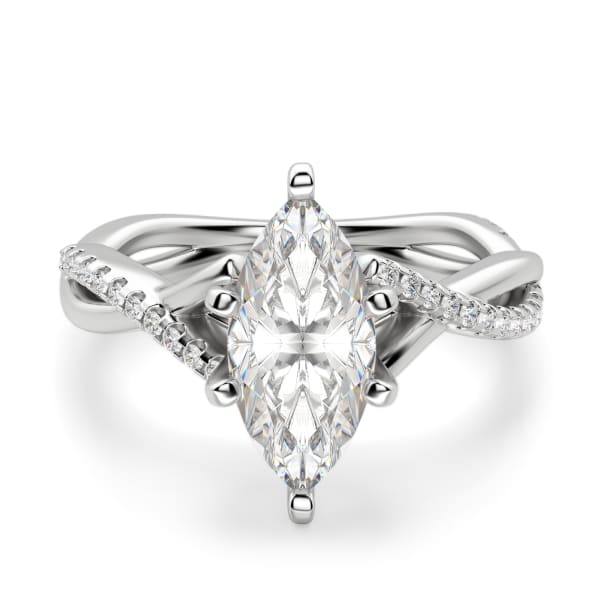
Moissanite diamonds have gained significant popularity as a stunning alternative to traditional diamonds. Their exceptional brilliance, durability, and affordability make them a sought-after choice for those seeking a captivating gemstone. In this article, we will explore the clarity of a moissanite diamond, highlighting its unique properties and explaining why it is an excellent option for those looking for a brilliant and affordable alternative to traditional diamonds.
1.Natural Brilliance
Moissanite diamonds are renowned for their exceptional brilliance. These lab-grown gemstones exhibit a high refractive index, meaning they disperse light more effectively than traditional diamonds. As a result, moissanite diamonds have a captivating sparkle and fire that rivals that of natural diamonds. The brilliance of moissanite diamonds ensures that they catch and reflect light in a way that captures attention and creates a striking visual impact
2. Clarity Grading
Similar to natural diamonds, moissanite diamonds undergo a clarity grading process. Clarity refers to the presence or absence of internal and external flaws, known as inclusions and blemishes, respectively. These characteristics can affect the overall appearance and transparency of the gemstone. Moissanite diamonds are typically classified as “eye-clean,” meaning they have no visible inclusions or blemishes when viewed with the naked eye. This high level of clarity ensures that moissanite diamonds exhibit a clear and pristine appearance, enhancing their beauty and desirability.
3. Inherent Clarity Advantages
One of the inherent advantages of moissanite diamonds is their exceptional clarity.
Unlike natural diamonds, which can contain various inclusions or blemishes, moissanite diamonds are typically created in a controlled laboratory environment. This controlled growth process allows for the production of moissanite diamonds with minimal internal or external flaws. As a result, moissanite diamonds often exhibit a higher clarity grade compared to natural diamonds of the same carat weight and size.
4. Forever Brilliant
Moissanite diamonds are known for their enduring brilliance. They possess a
remarkable ability to maintain their clarity and sparkle over time. This durability is due to the superior hardness of moissanite, which ranks 9.25 on the Mohs scale, just below
that of natural diamonds. This exceptional hardness ensures that moissanite diamonds are resistant to scratches, chips, and abrasions, making them a practical choice for everyday wear. The enduring brilliance of moissanite diamonds allows them to retain their clear and pristine appearance for a lifetime.
5. Affordability without Compromise
One of the most significant advantages of moissanite diamonds is their affordability without compromising on quality or beauty. Moissanite diamonds offer an excellent alternative to traditional diamonds at a fraction of the cost. The availability of moissanite diamonds in larger sizes and various shapes allows individuals to create dazzling jewelry pieces without exceeding their budget. This affordability makes moissanite diamonds an attractive choice for engagement rings, wedding bands, and other fine jewelry, offering exceptional value without compromising on clarity or brilliance.
6. Ethical and Sustainable Choice
Choosing moissanite diamonds as an alternative to natural diamonds provides individuals with an ethical and sustainable choice. Moissanite diamonds are lab-grown, meaning they are not mined from the Earth’s crust. This eliminates the environmental and ethical concerns associated with traditional diamond mining, such as habitat destruction, water pollution, and labor issues. Opting for moissanite diamonds allows individuals to enjoy the beauty of a sparkling gemstone while making a conscious and responsible choice
Conclusion
The clarity of a moissanite diamond is a key factor in its exceptional beauty and desirability. With their outstanding brilliance, enduring sparkle, and affordability, moissanite diamonds offer a compelling alternative to traditional diamonds
